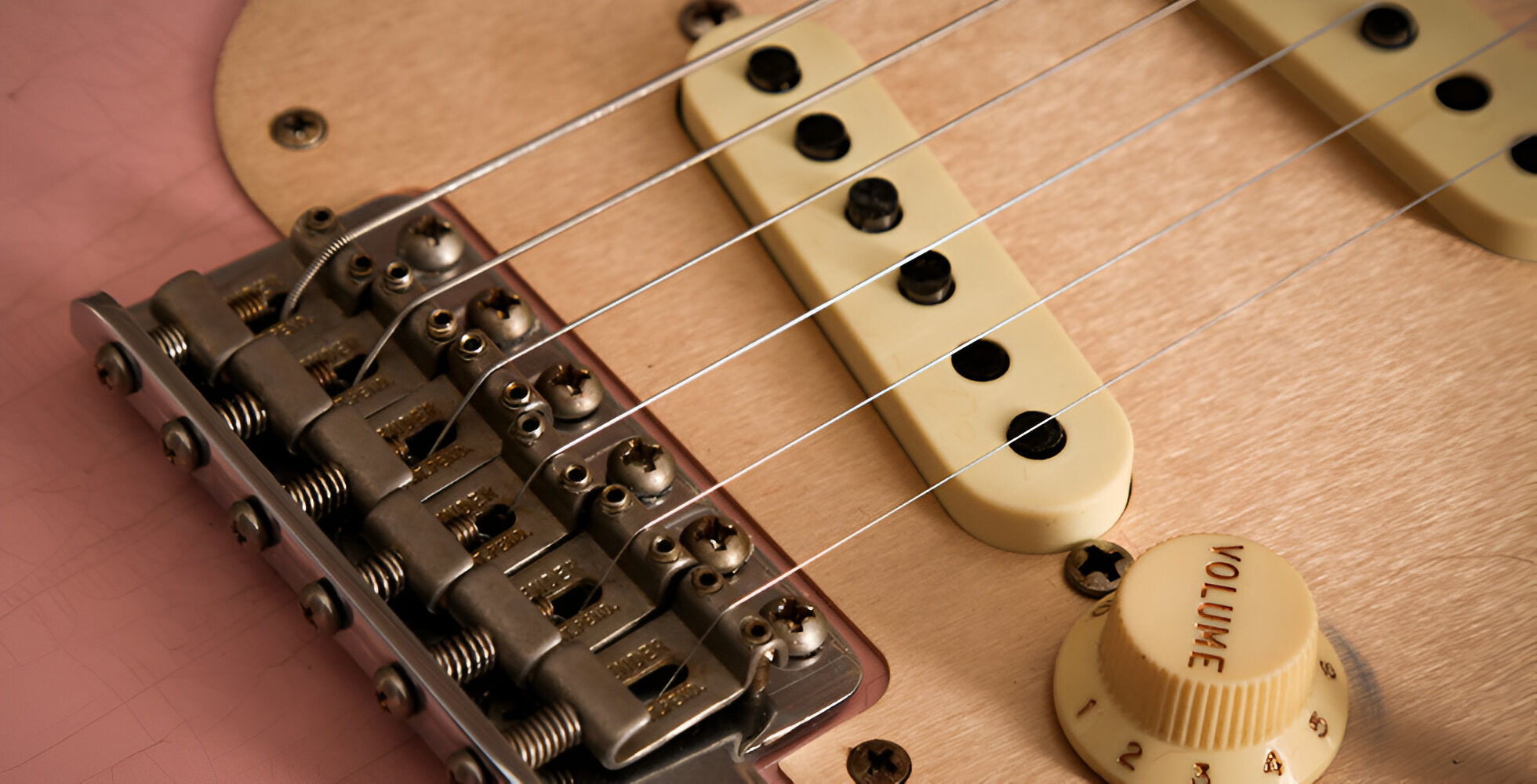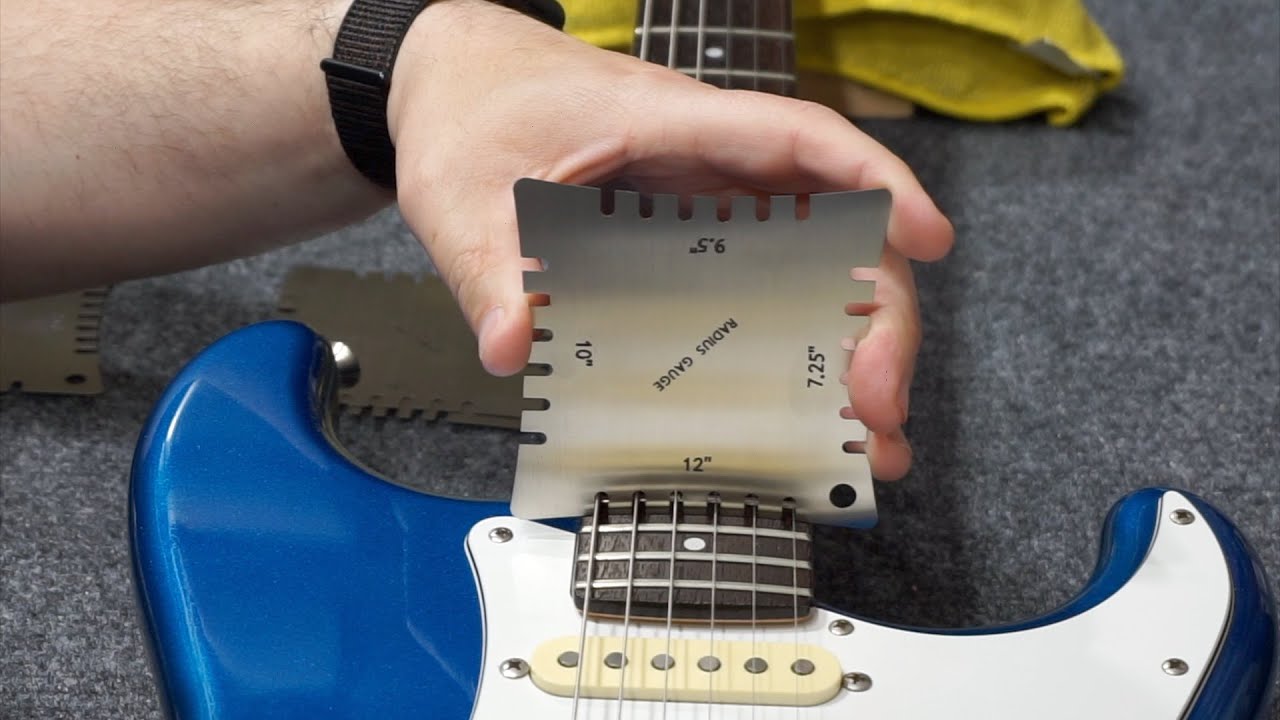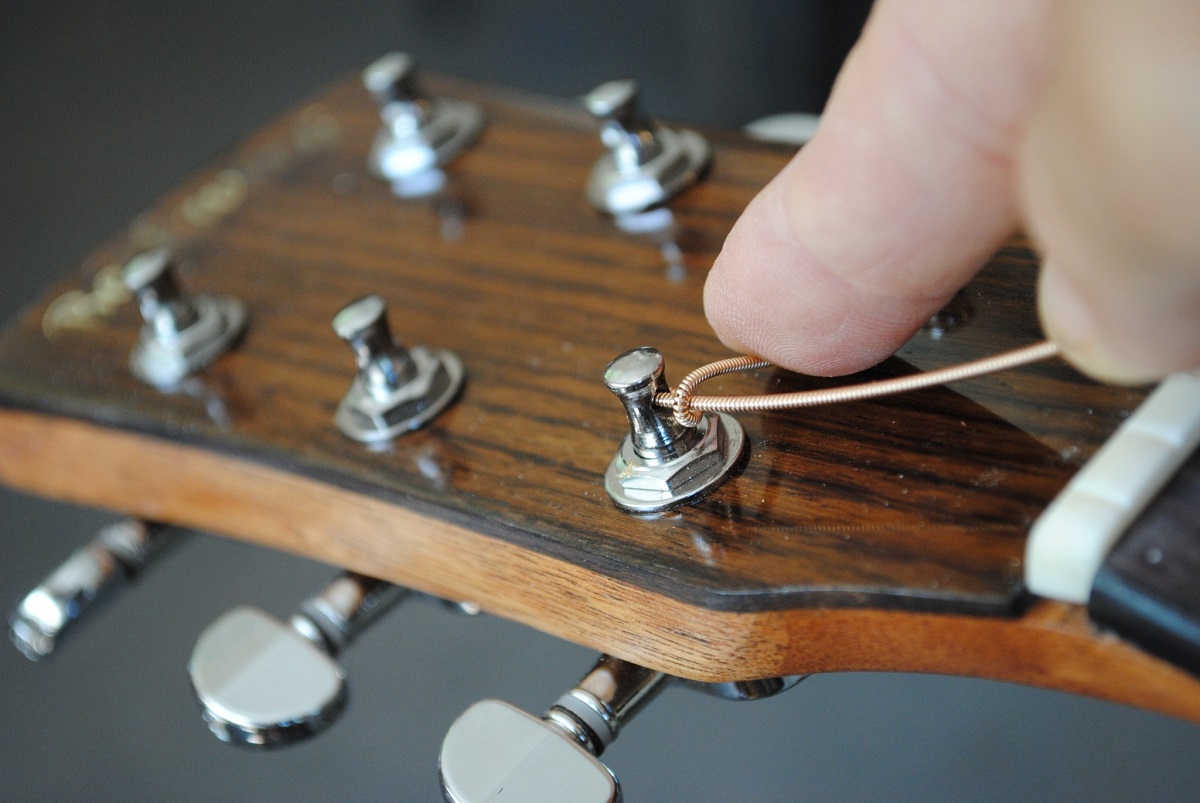Introduction
Understanding the Importance of String Gauge for Electric Guitars
When it comes to playing the electric guitar, the choice of string gauge is a pivotal factor that can significantly impact your playing experience. String gauge refers to the thickness of the strings, typically measured in thousandths of an inch. The selection of the appropriate string gauge is a highly personal decision, influenced by various factors such as playing style, musical genre, and personal preference. Understanding the nuances of different string gauges and their effects on playability and tone is essential for any guitarist seeking to optimize their performance.
As a guitarist, the string gauge you choose can profoundly influence your playing technique, comfort, and the overall sound of your instrument. Whether you prefer the effortless bending of lighter strings or the added resonance and sustain of heavier ones, the string gauge plays a crucial role in shaping your sonic identity. In this comprehensive guide, we will delve into the intricacies of string gauge for electric guitars, exploring the factors to consider and the characteristics of light, medium, and heavy gauge strings. By the end of this exploration, you will be equipped with the knowledge to make an informed decision that aligns with your musical aspirations and enhances your playing experience.
Understanding String Gauge
String gauge, often referred to as string thickness, plays a fundamental role in shaping the playability and tonal characteristics of an electric guitar. The gauge of a string is typically denoted by the diameter of the string in thousandths of an inch. For example, a light gauge string set may have a high E string with a diameter of .010 inches, while a heavy gauge set might feature a .013-inch high E string. The thickness of the strings directly influences the tension they exert on the guitar’s neck and bridge, affecting the overall feel and sound of the instrument.
Lighter gauge strings, with their thinner diameters, offer greater flexibility and ease of bending, making them popular among players who prefer intricate lead playing and expressive vibrato techniques. On the contrary, heavier gauge strings provide increased stability and sustain, catering to the needs of rhythm guitarists and those seeking a fuller, resonant tone. Understanding the nuances of string gauge empowers guitarists to tailor their instrument’s response to their playing style and sonic preferences.
Moreover, the choice of string gauge is intertwined with the guitar’s scale length, which is the vibrating length of the strings from the nut to the bridge. Guitars with longer scale lengths, such as many modern electric guitars, can accommodate heavier gauge strings without compromising playability, as the increased tension is distributed across the longer length. Conversely, guitars with shorter scale lengths, like some vintage models, may benefit from lighter gauge strings to maintain a balanced feel and optimal playability.
By comprehending the significance of string gauge and its interplay with scale length, guitarists can make informed decisions when selecting strings for their electric guitars. The subsequent sections will delve deeper into the specific factors that influence the choice of string gauge, providing valuable insights for players seeking to optimize their instrument’s performance and sonic characteristics.
Factors to Consider
When deliberating on the ideal string gauge for your electric guitar, several crucial factors come into play, each exerting a distinct influence on the instrument’s playability and tonal qualities. Understanding these factors is essential for making an informed decision that aligns with your musical goals and playing style.
- Playing Style: Your preferred playing style is a key determinant in selecting the appropriate string gauge. If you engage in intricate lead playing, favoring swift bends and expressive vibrato, lighter gauge strings may offer the flexibility and ease of play required to execute such techniques with finesse. Conversely, rhythm guitarists and those seeking a robust, resonant tone may lean towards heavier gauge strings to achieve enhanced stability and sustain.
- Musical Genre: Different musical genres often necessitate specific tonal characteristics. For instance, blues and jazz guitarists may gravitate towards lighter gauge strings for their responsiveness and articulation, while metal and rock players may opt for heavier gauges to attain a powerful, sustained sound. Considering the sonic requirements of your preferred genre is crucial in determining the most suitable string gauge for your electric guitar.
- Scale Length: The scale length of your electric guitar significantly influences the tension exerted by the strings. Guitars with longer scale lengths can accommodate heavier gauges without sacrificing playability, while those with shorter scales may benefit from lighter strings to maintain a balanced feel. Understanding the interplay between scale length and string gauge is imperative in optimizing your instrument’s performance.
- Personal Preference: Ultimately, your personal preference as a guitarist plays a pivotal role in the selection of string gauge. Experimenting with different gauges and gauged sets can provide valuable insights into the tonal nuances and playability characteristics that resonate with your musical sensibilities. Embracing your personal preferences and sonic aspirations is integral to honing your unique voice as a guitarist.
By carefully considering these factors, guitarists can make informed choices when navigating the myriad options in the realm of string gauges, ultimately enhancing their playing experience and unlocking new sonic possibilities.
Light Gauge Strings
Light gauge strings, characterized by their thinner diameters and lower tension, offer a myriad of advantages for electric guitarists, particularly those inclined towards intricate lead playing and expressive techniques. Typically, light gauge sets range from .008 to .046 inches, providing enhanced flexibility and effortless playability for musicians seeking to navigate swift bends and execute nuanced phrasing with finesse.
One of the primary benefits of light gauge strings is their responsiveness to the guitarist’s touch. The lower tension and thinner diameters facilitate swift string bending and vibrato, allowing players to imbue their performances with expressive nuances and dynamic articulation. This responsiveness is particularly advantageous in genres such as blues, jazz, and country, where subtle tonal variations and emotive playing are paramount.
Furthermore, the lighter tension of these strings contributes to a more forgiving playing experience, reducing the physical strain on the fingers and hands. This can be especially beneficial for novice players or those with smaller hands, enabling them to develop their technique with greater comfort and ease. Additionally, the reduced tension may result in a smoother feel across the fretboard, promoting fluidity and agility in fretting and chord transitions.
Light gauge strings also impart a bright and lively tonal character to the instrument, enhancing clarity and articulation, particularly in the higher registers. The thinner diameters produce a vibrant, bell-like quality, accentuating the harmonic richness of chords and arpeggios. This tonal profile makes light gauge strings well-suited for genres that demand shimmering cleans, sparkling arpeggios, and crystalline lead tones.
It is important to note that while light gauge strings offer these distinct advantages, they may exhibit reduced sustain and a thinner overall sound compared to heavier gauges. Additionally, the lower tension can lead to a propensity for fret buzz and may necessitate adjustments to the guitar’s setup to optimize playability and intonation.
Ultimately, light gauge strings cater to the preferences of players who prioritize agility, expressiveness, and a bright, articulate tonal palette. Their nuanced responsiveness and playability make them a compelling choice for guitarists seeking to infuse their performances with dynamic finesse and emotive articulation.
Medium Gauge Strings
Medium gauge strings occupy a middle ground between the light and heavy variants, offering a balanced blend of playability, tonal richness, and versatility. Typically ranging from .010 to .046 inches, medium gauge sets strike a harmonious equilibrium, catering to a diverse array of playing styles and musical genres.
One of the hallmark attributes of medium gauge strings is their ability to provide enhanced stability and sustain while retaining a degree of flexibility conducive to expressive playing. The slightly thicker diameters and moderate tension of medium gauge strings offer a responsive feel that appeals to both lead and rhythm guitarists, allowing for expressive bends and chordal articulation without sacrificing tonal depth and resonance.
Medium gauge strings are particularly well-suited for genres that demand a versatile sonic palette, such as rock, pop, and fusion. Their balanced tonal profile encompasses a robust low-end response, well-defined midrange articulation, and shimmering high-end clarity, making them adaptable to a wide spectrum of musical contexts and playing techniques.
Furthermore, the increased tension of medium gauge strings contributes to a more pronounced attack and sustain, imbuing chords and single-note passages with a compelling presence and harmonic richness. This tonal characteristic lends itself to genres that necessitate a powerful and articulate sound, providing a solid foundation for both rhythm and lead playing.
While medium gauge strings offer enhanced tonal depth and stability, they may require a slightly adjusted playing technique compared to lighter gauges, particularly in terms of string bending and vibrato. However, the transition to medium gauge strings often proves to be a seamless adjustment for players accustomed to lighter sets, offering a gratifying balance between playability and tonal robustness.
Ultimately, medium gauge strings serve as a versatile choice for guitarists seeking a balanced playing experience and a dynamic tonal range. Their ability to straddle the characteristics of lighter and heavier gauges makes them an appealing option for musicians exploring diverse genres and musical expressions.
Heavy Gauge Strings
Heavy gauge strings, renowned for their robust tonal presence and enhanced sustain, cater to the sonic preferences and playing styles of guitarists seeking a powerful, resonant sound with added stability and articulation. Typically ranging from .011 to .052 inches, heavy gauge sets offer a commanding tonal foundation and a tactile response that resonates across a diverse spectrum of musical genres.
One of the defining characteristics of heavy gauge strings is their ability to deliver a substantial low-end response, characterized by a pronounced warmth and depth. The thicker diameters and increased tension of these strings contribute to a solid, full-bodied tone that forms the cornerstone of rhythm playing, providing a formidable sonic backdrop for chords and arpeggios.
Heavy gauge strings are particularly well-suited for genres that demand a commanding and articulate sound, such as hard rock, metal, and blues. Their robust tonal profile facilitates expressive palm muting, aggressive riffing, and blistering lead passages, allowing for a dynamic range of tonal textures and harmonic richness.
Furthermore, the heightened tension of heavy gauge strings engenders enhanced sustain and resonance, prolonging the decay of notes and chords, and imbuing the instrument with a captivating, singing quality. This sustained articulation is a hallmark feature of heavy gauge strings, contributing to the instrument’s expressive capabilities and sonic impact.
While heavy gauge strings offer unparalleled tonal depth and sustain, they may necessitate a period of adjustment for players accustomed to lighter gauges, particularly in terms of fretting hand strength and string bending. However, the transition to heavy gauge strings often yields a gratifying transformation in the instrument’s sonic characteristics, providing a compelling platform for emotive playing and commanding tonal expression.
Ultimately, heavy gauge strings cater to the sonic aspirations of guitarists seeking a commanding, resonant sound and enhanced sustain. Their ability to underpin a diverse array of playing styles and musical genres with a formidable tonal foundation makes them an indispensable choice for musicians seeking to harness the full sonic potential of their electric guitars.
Conclusion
Understanding the intricacies of string gauge for electric guitars is paramount for any guitarist seeking to optimize their instrument’s playability and sonic characteristics. The choice of string gauge, whether light, medium, or heavy, profoundly influences the instrument’s tonal palette, responsiveness, and stability, catering to the diverse needs and preferences of players across various musical genres.
Light gauge strings, with their thinner diameters and lower tension, offer enhanced flexibility and responsiveness, making them an ideal choice for guitarists inclined towards expressive lead playing and nuanced phrasing. Their bright, articulate tonal profile and dynamic playability make them well-suited for genres that prioritize emotive articulation and shimmering cleans.
Medium gauge strings strike a harmonious balance between playability and tonal depth, catering to a diverse array of playing styles and musical genres. Their versatility and dynamic tonal range make them an appealing choice for musicians exploring a wide spectrum of musical expressions.
Heavy gauge strings, renowned for their robust tonal presence and enhanced sustain, cater to the sonic preferences of guitarists seeking a commanding, resonant sound with added stability and articulation. Their formidable tonal foundation and expressive capabilities make them indispensable for genres that demand a powerful and articulate sound.
Ultimately, the selection of string gauge is a highly personal decision, influenced by factors such as playing style, musical genre, and personal preference. By considering these factors and understanding the characteristics of different string gauges, guitarists can make informed decisions that align with their musical aspirations and enhance their playing experience.
Whether seeking the expressive finesse of light gauge strings, the balanced versatility of medium gauge strings, or the commanding presence of heavy gauge strings, guitarists are empowered to tailor their instrument’s response to their unique playing style and sonic sensibilities. The exploration of string gauge is a journey of sonic discovery, offering guitarists the opportunity to unlock new dimensions of expressiveness and tonal richness, ultimately shaping their musical identity and artistic voice.

























